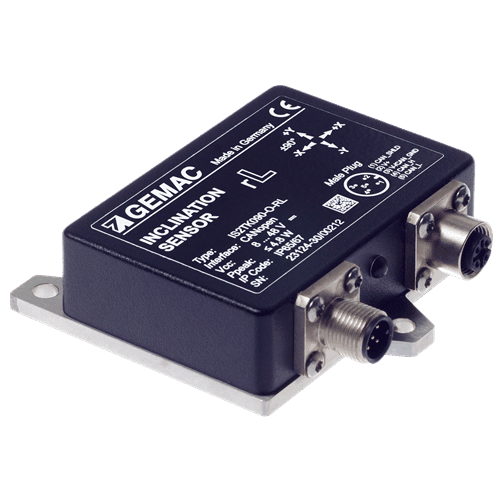Precision Sensors for Structural Health Monitoring
New precision sensors from the Chemnitz-based electronics company GEMAC support the monitoring of buildings and bridges. This solution approach will be presented for the first time at the SPS/IPC/Drives trade fair (Hall 7, Stand 297), which will take place from 22 to 24 November 2016 in Nuremberg.
In coöperation with Deutsche Bahn, the GEMAC - Gesellschaft für Mikroelectronikanwendung Chemnitz mbH develops precision sensors for the monitoring of buildings and bridges. Up to now, two sensors have been developed: on the one hand, a sensor for high-precision tilt measurement in the range of ±5° and, on the other hand, a sensor for precise acceleration and displacement measurement. The first mentioned sensor impresses with an accuracy of up to 0.001° and a resolution of 0.0001°. The measuring range of the sensor for acceleration and displacement measurement is ±2 g, with a resolution of 1 µg. As these sensors communicate via a CAN interface, they are easy to wire and enable robust and interference-proof communication.
Initial field tests with prototypes were successfully carried out in 2015. These sensors are then transferred to series production. The aim is to develop an out-of-the-box solution. However, much more data has to be collected on various structures.
The advantage of distance measurements based on acceleration data is that no local reference is required. This opens up the possibility of permanent monitoring, especially for bridges. However, a calibration of the acceleration sensors at the installation location is required for displacement measurement. A limitation of the distance measurement by means of acceleration is that the double integration of the acceleration data for obtaining the distance signal has to be carried out subsequently for certain time windows (e. g. the duration of a train crossing) and cannot be carried out in real time. Previous approaches for the long-term measurement of a path using acceleration data and its double integration are not suitable for the application. By combining acceleration and precision tilt measurements, the position of bridges can now be monitored over a long period of time without any problems. This opens up numerous new applications for the inclination and acceleration sensors of GEMAC in the field of structural health monitoring. In addition to displacement measurement, these acceleration sensors also offer the possibility of measuring natural frequency up to 200 Hz.



